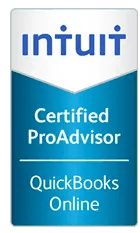Extreme Ownership
200 Navy SEALs go to Coronado, California for hell week, which consists of 72 hours of nonstop basic training with just one hour of sleep.
Being constantly cold, wet, and exhausted causes dozens to quit. Many get sick or become injured. This is not a physical test, but rather a mental one. Success is often through determination and will, but also through innovation and communication. Those that win show that they are not only physically strong, but can out-think their adversary.
In Leif Babin’s account, 101 students begin hell week, and only 40 remain at the end. Seven men are assigned for each boat crew and must carry a 200-pound boat, which becomes heavier when filled with water and sand. The boats are carried overhead through an obstacle course consisting of 20 foot high sand berms, ropes, and telephone poles. The students were often required to paddle their boats in and out of the Pacific Ocean. The senior ranking man would be assigned as the boat crew leader and would receive orders from the instructors and relay that information to their teams. The boat crews raced to determine who would be the winner, and the prize was sitting out the next race. The boat to come in last was punished by the instructors.
In this particular hell week, Boat Crew Two dominated, winning or nearly winning every single race. Working as a team, they pushed themselves hard every time. Morale was high--Boat Crew Two had a strong leader and a highly motivated crew. On the other hand, Boat Crew Six lost nearly every single race, coming in dead last every time. Rather than working together as a team, they were working as individuals. Furious and frustrated, they were accusing each other of not doing their part. The leader of Boat Crew Six felt he had a team of underperformers who couldn't get the job done. The Senior Chief decided to swap out the boat crew leaders from the best to the worst, with all conditions remaining the same except for the leader. Could it possibly make a difference?
The leader from Boat Crew Two was clearly not happy; frustrated to leave the team he built and knew well. With no choice, he accepted the challenge. The leader from Boat Crew Six was elated. Initially, he had the worst luck of the draw but was glad to redeem himself by taking on the winning crew and felt that his new assignment would be easy for him. Boat Crew leaders were given instructions by the commanders and in turn instructed their teams as before. As they raced, two boats were ahead of the pack. Boat Crew Six was in the lead and made their way to the finish line just ahead of Boat Crew Two. A miraculous turnaround had taken place--they had gone from last place to first place by working together as a team. The same team, under the same circumstances, was winning only because of new leadership.
Principle: This is an example that there are no bad teams, only bad leaders. The leader’s attitude sets the tone and either drives the performance or doesn’t. Regardless of what you preach, it's what you tolerate. Otherwise, poor performance could end up being the new standard.
Here are 5 more principles in the book that are too good not to share:
1) All responsibility for success or failure rests with the leader. There is no one else to blame. Admit failures and develop a plan to win. Owners don't just take responsibility for their job but have extreme ownership for anything that impacts the mission.
2) A leader must be a true believer in the mission. If they don't, they will not overcome the challenges needed to win. Leaders must operate knowing that they are part of something greater than themselves. Leaders must give understanding of why they are doing what is requested so they will believe in the mission and win.
3) Combat, like in life, has layers of complexities. Simplifying as much as possible is crucial to success. When plans are too complicated, people don't understand. And when things go wrong, and they will go wrong, complexity spirals out of control into total disaster. Plans and communication need to be kept simple.
4) A leader must remain calm on the battlefield. SEAL leaders use a principal called Prioritize and Execute. Relax. Look around. Make a call. Don't try to tackle a multitude of problems or tasks all at once. Determine the highest priority task and then execute. Stay a step to the head of challenging situations and anticipate an effective response.
5) A leader must lead with opposing ideas. For example, a leader must be disciplined in order to find freedom. Lead, but also be ready to follow. Be aggressive, but not overbearing. Calm, but not robotic. Confident, but never cocky. Brave, but not reckless. Have a competitive spirit, but be a gracious loser. Be attentive to details, but not obsessed by them. Humble, but not passive. Quiet, but not silent. Close with team members, but not too close. Have nothing to prove, but everything to prove.

















